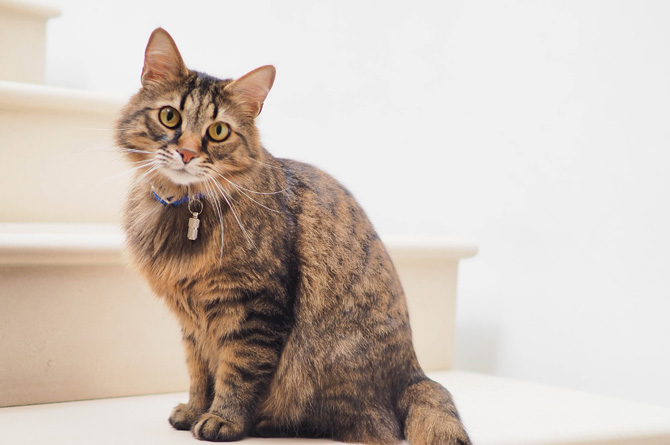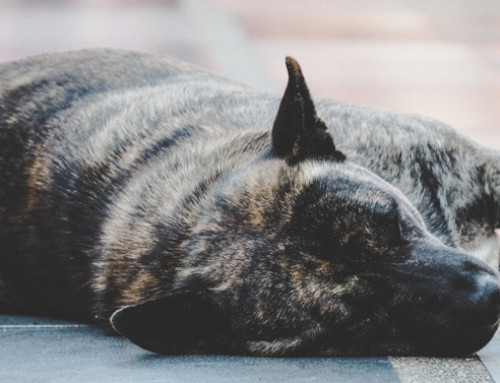Feline hyperthyroidism is a common hormonal disorder, typically seen in older cats (i.e. those over seven years of age). However, it can affect both male and female cats.
Caused by the overproduction of thyroid hormone, feline hyperthyroidism affects many of the cat’s organs. If left untreated, the outcome can be fatal. Although, if treated early, the majority of cats recover well, which is positive!
Does my cat have hyperthyroidism?
Knowing the common clinical signs can help you identify the disorder. Yet, it’s important to understand that many of the signs develop gradually, so they can easily be missed. Common symptoms include:
- Weight loss
- Increased appetite
- Change in behaviour (typically, cats become more anxious, aggressive or restless)
- Increased thirst and urination
- Vomiting
- Diarrhoea
- The coat can become matted and greasy
If you have noticed your cat displaying any of the above signs, it’s important to make an appointment with your vet. In order to make a diagnosis, your vet will perform a blood test. They may also suggest checking the cat’s other organs, such as the kidney and liver, as these can be affected by hyperthyroidism.
The importance of early diagnosis and treatment
Unfortunately, hyperthyroidism can affect many of the cat’s major organs. If left untreated, it can cause heart failure. Furthermore, high blood pressure is an associated complication, which can negatively affect the heart, brain, eyes and kidneys.
However, providing treatment is started early, most of our meowing mates can enjoy a good quality of life. There are four treatment options available for feline hyperthyroidism.
Medical
Sadly, anti-thyroid drugs will not cure feline hyperthyroidism, but they can help control the symptoms in both the short term and long term. The most common drug is carbimazole. Anti-thyroid drugs work by reducing the production and release of thyroid hormones. They are available in tablet form and administered once or twice daily. The downside is that in order to maintain control of the disorder, drugs will need to be administered to your cat for the rest of his or her life.
Note: According to Perth Cat Hospital, it is now possible to get anti-thyroid drugs as a transdermal gel. This is rubbed into the inside of the cat’s ear and is absorbed into the bloodstream.
Surgical
Surgery to remove the thyroid glands provides a cure. However, as with any surgery, there are risks and side effects that will need to be weighed up. This is particularly so if your cat has any other diseases. The most common risks and side effects are nerve damage, as well as damage to the parathyroid glands, which control calcium levels in the blood.
Certainly, measures are taken to help reduce the associated risks. For example, cats will generally receive anti-thyroid drugs for 3-4 weeks prior to surgery. Feline patients will also be closely monitored for a few days following surgery.
Dietary
Diet therapy centres on a low iodine diet. The thyroid gland requires high levels of iodine to produce the thyroid hormone. Therefore, strictly controlling the amount of iodine your cat ingests will help prevent excessive production of thyroid hormone.
This therapeutic diet is available from your vet and your cat must eat it exclusively. There are no other foods are allowed! Unfortunately, this treatment is fairly new. As such, the longer-term effects are not yet known.
Radioactive iodine therapy
Radioactive iodine is a safe and effective treatment for feline hyperthyroidism. The therapy kills the affected thyroid tissue and, as such, has a good success rate. The therapy is administered via a single injection with no serious side effects.
Of course, the downside to this treatment is that cats are required to stay in the hospital until their level of radioactivity is considered safe. This generally means a stay of up to 10 days following therapy. Plus, it is more expensive than the other treatments and it is not yet widely available across all of Australia.
Do you know a cat that’s had feline hyperthyroidism? What treatment did they undergo?
Related posts:
- Could your cat have feline dementia?
- Help! I have an overweight cat
- How to be an eco-friendly cat owner
Information sources:
Feline hyperthyroidism. Perth Cat Hospital. Accessed online via: http://www.perthcathospital.com.au/feline-hyperthyroidism/
International Cat Care. Hyperthyroidism. Aug 2018. Accessed online via: https://icatcare.org/advice/hyperthyroidism/
Ascot Veterinary Hospital. Endocrine diseases cats. Accessed online via: https://www.ascotvet.com.au/endocrine-diseases-cats/
Image source: Photo by Alexander London on Unsplash







Leave A Comment